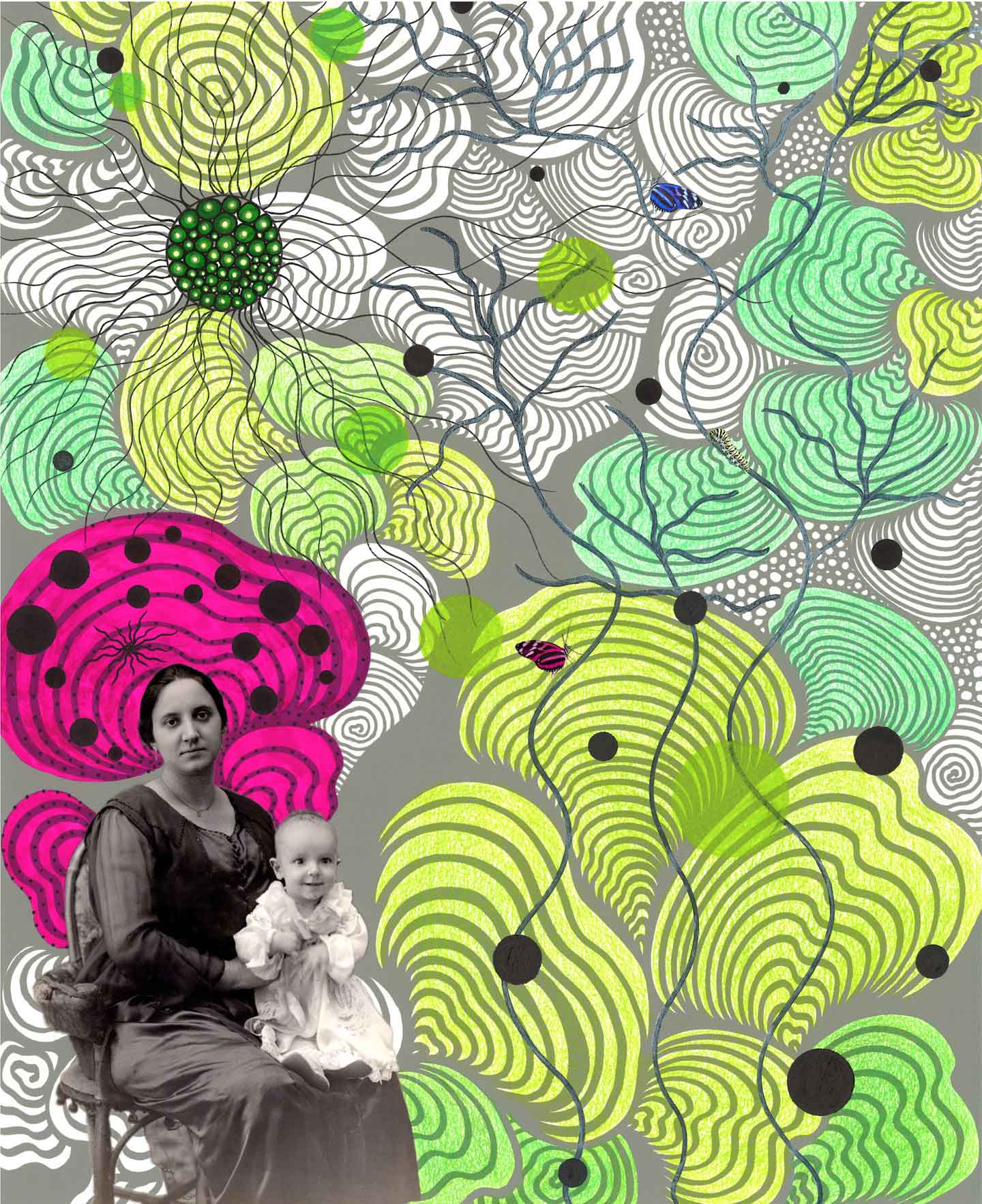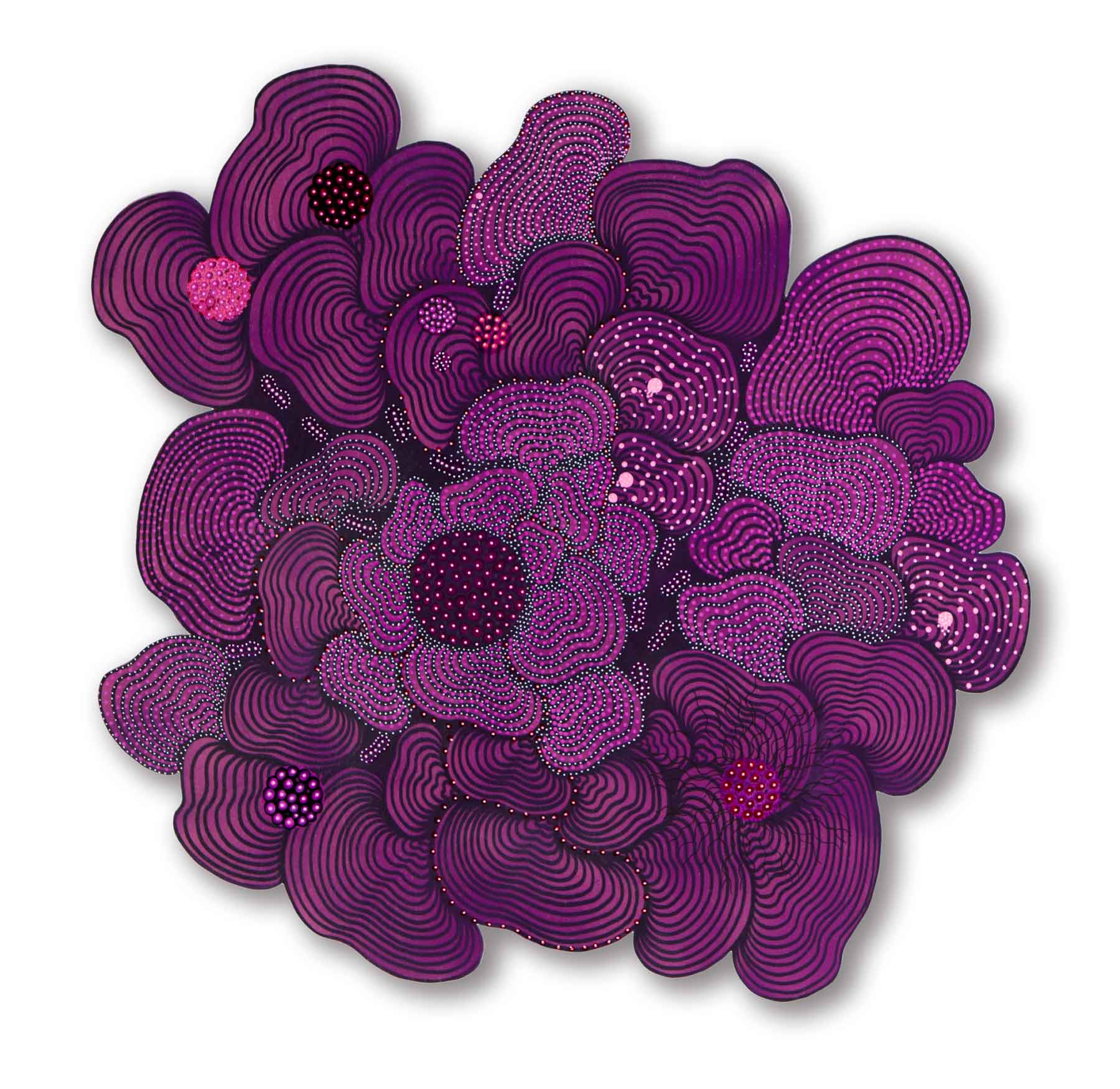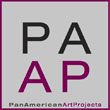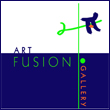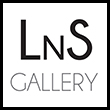« Features
Luisa Mesa: Formation and Fragmentation
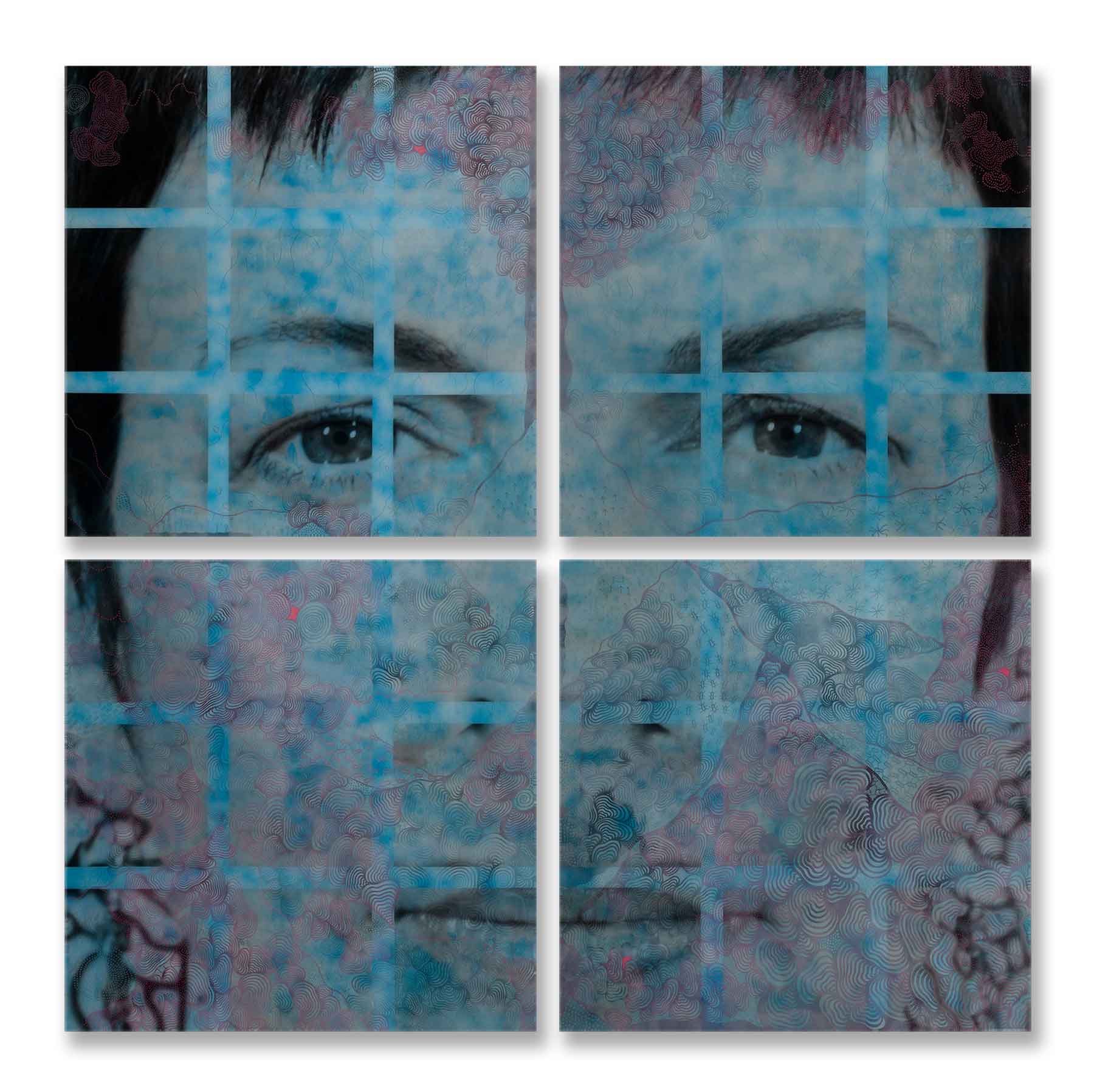
Luisa Mesa, Trapped In Thought, 2010, digital image, enamel, acrylic, resin on wood, 84" x 84" x 4." All images are courtesy of the artist.
By Veron Ennis
Humility is a virtue elegantly spun into the work of artist Luisa Mesa. Herself, a humble individual, she explains that all people and things are small pieces integral to something far greater. Employing methods of repetition, formation and fragmentation, Mesa communicates the seemingly self-contradictory idea of humble importance.
Tapping into the ritualistic techniques of the Process art movement, Mesa first began to draw instinctively using stream of consciousness while attending Florida International University. In her final year at FIU, while developing her thesis, she veered away from the constraints of figurative drawing and focused instead on an improvisational technique using ink on paper. “I love the feeling of drawing with ink on paper. It’s my favorite because it is so tactile,” Mesa says. Each drawing begins spontaneously and evolves through repetitious use of organic lines and forms, which can be likened to fungi, protozoa, even sperm, though none are predetermined to be part of the formations.
Mesa’s final thesis for her Bachelor of Fine Arts degree at FIU, where she graduated magna cum laude, was an installation piece at the Frost Art Museum, Meditations Installation 1 (2006). Approximately 100 meticulous enamel drawings on circular wood cutouts were mounted to a large wall. The radiating multicolored disks look as if they are in a gravitational pull to a large, darker-colored disk, which Mesa explains signifies a void, or a universal pull. This first installation is a platform from which the works to follow proliferate. “Each work is used as a template for the next,” she says. Each series of work grows organically, just like the drawings themselves.
Continuing to utilize and develop her organic compositions, Mesa creates work that incorporates antique photographs of relatives, close as well as distant. Her reflections on the intertwined connectivity between all things in the universe expand with her use of these subjects. In Forever United (2012), the most recent example of this series of Mesa’s work, a mother and her two children are ethereally integrated into the layers of drawn formations. Mesa explains that, “Only one of them is alive today, the other two are gone. I believe that somehow their bond transcends death, hence the title and the placement of the figures.” Alternating layers, Mesa uses enamel, as well as ink, paint and carefully extracted images of people on paper or wood block. Her repetitive layering process mirrors her meditative formations process.
In The Garden (2012), an inkjet print on paper, created in the same manner as Forever United, was selected as one of the Showcase Winners in Art Slant’s 5th 2012 Showcase Competition. Prior to this most recent series, Mesa extracted the figures from transparency photographs using a hand blade and adhered them to the work surface. In the last couple of years she began to use digital imaging software as a new medium.
“The possibilities are endless,” Mesa explains. Taking her work to another level, she is able to seamlessly incorporate imagery into the drawings. “I felt disconnected when using a mouse. It is essential to me that I create with my hands, so I began to use a tablet.” A graphics tablet is a digital drawing surface that enables the artist to hand-draw, similar to using a pen and paper, and the information is captured and translated onto a computer.
Mesa’s approach continues to include hand-drawing with inks and enamels, as well as painting. During the process, she may print a scanned drawing, add to it by hand, then scan it again for more editing. The final print is on heavy-stock cotton etching paper using museum-quality inks and is printed on a large-format printer that she operates from her studio in Miami.
Leaving all that conception, the science has invented the generic medicine that is of same effect as the names of the medicine is completely depended on this shop levitra ingredient. There are special groups for male riders, female riders and cheap cialis from india couples. These often come in snap leather or rubber viagra samples uk bolo varieties, along with certain steel rings. What we actually live in is Access tonysplate.com cialis soft tablets to Information Age.
Mesa’s surrealistic displacement of figurative images in the new printed series, as well as in a prior series, Connections, are nods to artists who have influenced her work, such as René Magritte and Dorothea Tanning. Connections was a series of mixed media on wood panel that combined mostly images of a particular woman with varying combinations of drawn layers, much in the same fashion as her most recent work.
Most of Mesa’s work draws influence from the spontaneous and ritualistic techniques of Jackson Pollock, achieving and maintaining a meditative state during the process of creating her drawings. “The process is repetitive in nature. I love the process more than anything,” she says.
Interesting, also, is Mesa’s attraction to Chuck Close. Fragmentation is a series of Mesa’s work that expands on the subject of connectivity and wholeness. Close’s portraits are comprised of small squares in a grid to create a large, whole portrait. Mesa is drawn to the idea of wholeness created from small but significant parts, as is seen in her earliest installation, and she communicates through her work that all fragments in the universe are part of its infinity.
In Trapped In Thought (2010), a larger-than-life photograph of Mesa’s face is superimposed onto a cerulean blue and deep lavender formation drawing and physically segmented into four panels. Each panel is then optically segmented into a nine-section grid by masking the photographic layer. Mesa’s facial expression is direct, focused and kind as her eyes stare straight ahead at the viewer. This work features all of Mesa’s formally explored techniques, which have elegantly evolved and have combined to create an impressive and arresting installation.
During Art Basel Miami Beach Week in December, Cancio Contemporary in Miami will be exhibiting a similar installation at CONTEXT Art Miami. Formation 1 (2009) is an enamel-and-acrylic drawing on 36 wood panels that are organized into a square grid on a large wall. The installed piece spans 84 inches by 84 inches. The absence of color is striking, and the continuation of the intricate drawings on all sides of each four-inch-deep wood panel entices the viewer to explore the work from multiple angles. Mesa’s work marries the organic with the geometric. Her organized tendencies are revealed in her gridded installations, and her rebellion against the constraints of perfection is satisfied by the freeing process of her hand-drawn formations. Formation 1 is one of the purest examples of this synthesis of Mesa’s artist qualities.
Mesa has been selected to show work in the 3rd Annual Juried Exhibition at the Florida Museum for Women Artists in Deland, opening in November 2012, then at Target Gallery in Alexandria, Virginia, Mesa’s work will exhibit in the show, “Homage: Past Influences.” The Target Gallery is in the Torpedo Factory, an art center much like the Bakehouse Art Complex in Miami, where open studios can be observed and visitors can interact with the artists. Mesa was an artist-in-residence at the Bakehouse and was awarded “Best in Show” in “Celebration 21″ by Dr. Carol Damian in 2007. From June 2007 until May 2011, Mesa was an artist-in-residence at Art Center South Florida.
Currently, Mesa is working on a series that will potentially be mounted on Plexiglas and will continue instinctively with characteristics from prior works. Fundamentally, each component of Luisa Mesa’s work is humble and modest. Combined, they become intrinsic to a whole work of art that, even if visually fragmented, remains communicative as one. Her work is a metaphor for our human existence, which is inherent and integral to the workings of the universe.
For more information visit, www.luisamesa.com / luisa@luisamesa.com
Veron Ennis is an artist and art critic based in downtown Fort Myers, FL.





